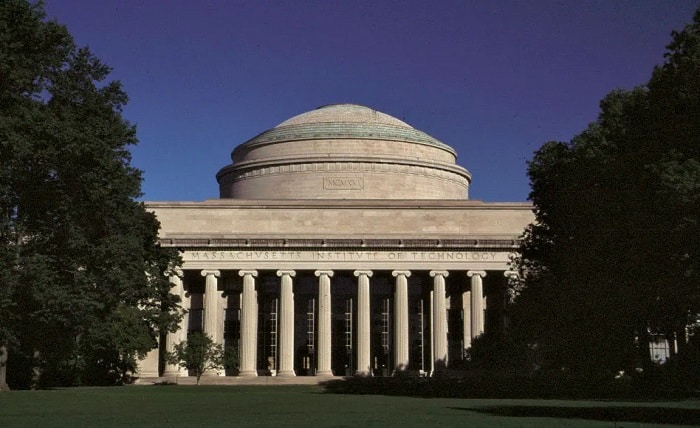
Where is MIT Located? A Guide to the Campus and the City
The Massachusetts Institute of Technology, or MIT, is one of the most prominent and important colleges in the world, particularly in the domains of mathematics, science, technology, and engineering. Numerous Nobel laureates, Turing Award winners, Fields Medalists, astronauts, innovators, and business owners have come from MIT, which was founded in 1861. So what’s it like to live and study at MIT, and where is it located? We’ll look at MIT’s location, campus, and city in this blog article, along with some advice and thoughts on how to get the most out of your visit.
Location: Where is MIT on the Map?
Situated across the Charles River from Boston, the state capital and largest city of Massachusetts, MIT is situated in Cambridge, Massachusetts, a city home to around 110,000 residents. Cambridge is a part of one of the oldest and most historically significant areas in the country—the Greater Boston Region, which is home to over 4.8 million people. Harvard University, another prestigious university, is located in Cambridge, and the two universities have a cordial rivalry and cooperative relationship. The address of MIT is 77 Massachusetts Avenue, Cambridge, Massachusetts 02139, USA.
Campus: What is MIT’s Campus Like?
The 166-acre campus of MIT is home to museums, grassy areas, and a blend of historic and modern buildings. There are many zones on campus, including the Main Campus, West Campus, East Campus, and North Campus. The majority of MIT’s academic buildings, libraries, and administrative offices are situated on the Main Campus, which serves as the university’s central hub. In addition, the Stata Center, the Infinite Corridor, and the famous Great Dome are located on the Main Campus. The majority of the sporting facilities, dorms, and fraternities are situated on the West Campus. In addition, the MIT Media Lab, the Kresge Auditorium, and the MIT Sloan School of Management are located on the West Campus. Some of the residence halls, cultural houses, and student clubs are situated on the East Campus. The MIT Museum, the List Visual Arts Center, and the MIT Chapel are also located on the East Campus. Some of the research facilities, labs, and graduate residences are situated on the North Campus. In addition, the Bates Center, the Haystack Observatory, and the MIT Lincoln Laboratory are located on the North Campus.

City: What are Cambridge and Boston Like?
Boston and Cambridge are energetic, varied cities with a wealth of past events and cultures. Students and tourists may enjoy a wide range of attractions and activities in Cambridge and Boston, including museums, parks, theaters, restaurants, pubs, and retail stores. Among the most well-liked sights and pursuits in Cambridge and Boston are:
Harvard Square is the bustling, historically significant neighborhood in Cambridge that is home to Harvard University. With the Harvard Book Store, the Brattle Theatre, the Harvard Art Museums, and the Harvard Yard, Harvard Square is a center for dining, shopping, entertainment, and events.
Kendall Square: MIT is situated in this vibrant and forward-thinking neighborhood in Cambridge. Science, technology, and entrepreneurship are all concentrated at Kendall Square, which is home to several businesses, research facilities, and venture capitalists. In addition, Kendall Square features a skating rink, a farmers market, and a movie theater.
Boston’s Fenway Park: Is home to the Boston Red Sox and is a storied and historic baseball venue. The World Series, the Green Monster, the Boston Marathon, and other iconic games and events have all taken place at Fenway Park, the nation’s oldest and most cherished stadium.
The Freedom Trail: This is a 2.5-mile walking path that links sixteen important American Revolutionary War locations in Boston. The Boston Common, the Old State House, the Paul Revere House, and the Bunker Hill Monument may all be seen while exploring Boston’s history and culture along the Freedom Trail.
Boston-based Museum of Fine Arts: The Museum of Fine Arts is one of the biggest and most extensive art museums in the US. More than 450,000 pieces of art from ancient to modern times, from many lands and civilizations, are housed in the collection of the Museum of Fine Arts. A few of the events, activities, and exhibitions held by the Museum of Fine Arts are the MFA Film series, the Monet and Boston show, and the Art of the Americas Wing.
Boston’s Quincy: Market is a well-known and historically significant marketplace that is situated close to the harbor. Quincy Market, which has more than 100 merchants, eateries, and entertainers, is a destination for dining, shopping, and entertainment. Quincy Market is likewise jovial, particularly on holidays and celebrations, such as the lighting of the Christmas tree, the parade on St. Patrick’s Day, and the fireworks on July Fourth.
Transportation: How to Get to and Around MIT?
There are various ways to get to and around MIT, depending on your preference and convenience. Here are some of the transportation options for MIT:
Logan International Airport in Boston, which is around 5 miles away, is the closest airport to MIT. To get to Kendall/MIT, use the Red Line metro to South Station after transferring on the Silver Line bus from the airport. It is a free trip that should last around thirty minutes. The cost and travel time to MIT are around $25–$35 for a taxi or a ride-sharing service like Uber or Lyft.
Trail: The Kendall/MIT station, which is at the end of the Red Line of the Boston public transit system (also known as the T), is the closest rail station to MIT. Boston and Cambridge neighborhoods, including Harvard Square, Downtown Crossing, and South Station, are all reachable from MIT by the Red Line. For the metro, a ride costs $2.40, and a seven-day pass costs $22.50. Take the bus, Amtrak, or commuter train to the subway’s South Station or North Station. From there, take the subway to Kendall/MIT.
Car: There is expensive and restricted parking at MIT, and traffic can be high, making driving there difficult. If you decide to drive, your GPS can be set to 77 Massachusetts Avenue, Cambridge, MA 02139, USA. Additionally, parking alternatives, costs, and permit purchases may be found on the MIT Parking and Transportation Office website. Parking fees range from $8 to $32 per day, depending on the location and length of stay.
Bike: Considering that Cambridge and Boston are bike-friendly towns with plenty of bike lanes, routes, and racks, riding a bike to MIT may be an enjoyable and healthy way to get around. Using your bike or renting one from a bike-sharing company like Bluebikes, which has over 300 stations and 3,000 bikes in the region, are your two options. Bluebikes are available for $2.50 per ride or $20 for a monthly pass. The MIT Bike Map is another useful tool for determining the best bike routes and resources for MIT.
Tips: How to Make the Most of Your Time at MIT?
MIT is a unique and exciting place to study and live, but it can also be challenging and stressful. Here are some tips on how to make the most of your time at MIT, and enjoy and succeed in your academic and personal endeavors:
Investigate your interests: MIT provides a vast array of academic opportunities, courses, and programs to suit a variety of interests and professional goals. By enrolling in various classes, forming groups and teams, going to events and seminars, conducting research, and working on projects, you may explore your interests. Additionally, you may benefit from thousands of MIT courses and resources through the free online platform known as MIT OpenCourseWare.
Seek assistance and support: MIT may be a hard and challenging institution, and you can run into obstacles and issues while completing it. Numerous individuals and resources, including your peers, mentors, advisers, tutors, counselors, and professors, are available to assist and support you. You can also make use of the MIT Student Support Services, a professional, discreet program that helps students with their academics, personal lives, and finances.
Maintain balance in your life: MIT may be a demanding and hectic place, and your workload and obligations may cause you to feel overburdened and anxious. By prioritizing and managing your time, creating attainable objectives, taking pauses, and unwinding, you may achieve life balance. You may also take charge of your health and well-being by maintaining a healthy diet, getting enough sleep, working out frequently, and abstaining from drugs. To help you keep in shape and have fun, you may also take advantage of the MIT Recreation service, which provides fitness centers, classes, events, and activities.
Make connections with people: The student body, professors, and staff at MIT represent a wide range of backgrounds, cultures, and viewpoints, making for a lively and varied community. Making friends, joining clubs and organizations, taking part in events and activities, volunteering, and helping others are all ways to build relationships. Additionally, you may make use of MIT Together, a service that encourages diversity, acceptance, and respect while providing tools and chances for community interaction and discussion.
Conclusion
MIT is a prestigious institution that provides excellent research and instruction in the fields of science, technology, engineering, and mathematics. As part of the Greater Boston area, one of the oldest and most historic areas in the country, MIT is situated in Cambridge, Massachusetts, a city with a rich cultural and historical legacy. The MIT campus is separated into many zones, including the Main Campus, the West Campus, the East Campus, and the North Campus, and has a blend of modern and traditional buildings, green spaces, and museums. Cambridge, Massachusetts, home of MIT, has a wide range of sights and events.




